Self Harm: The Silent Struggles
Self Harm: The Silent Struggles

Written By: Shaundtrya Ganasan, Licensed Counselor (KB11097)
Disclaimer & Trigger Warning: This article discusses and ventures into topics related to self-harm, which can be triggering for some readers. Please proceed with caution and reach out to a trusted one or a mental health professional if you are struggling. The content below is intended for educational purposes only and does not encourage or promote self-harm in any way. If you or someone you know is engaging in self-harming, please channel the right assistance from a certified mental health professional.
Ever felt overwhelmed or exhausted to the extent of giving up?
At that moment, ever thought of harming yourself?
Ever gave in to those temptations?
Understanding the Cycle & Breaking Free
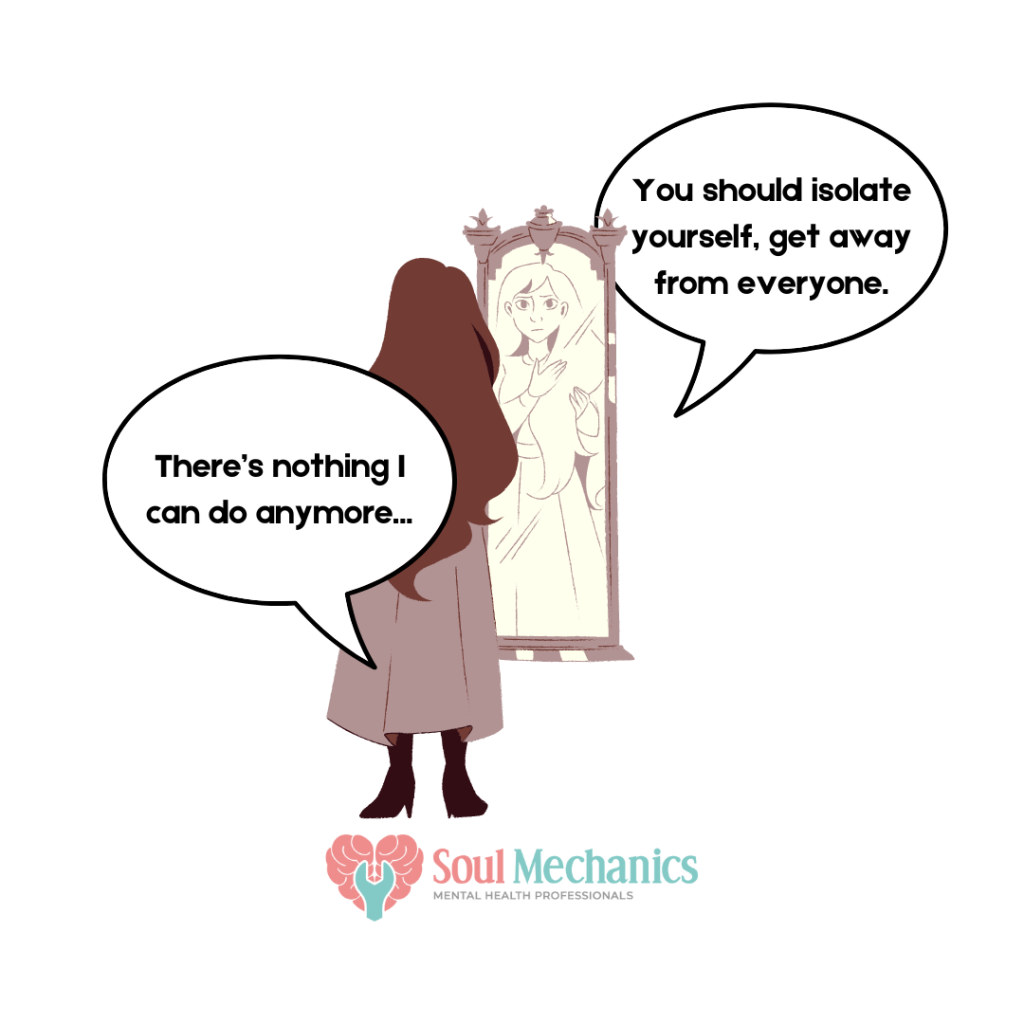
Self-harm is a deep and hidden struggle that affects many from every walk of life. For many, it became a way of coping with overwhelming emotions, a physical channel for mental and emotional exhaustion, or a means to regain control over seemingly uncontrollable life aspects. While it may provide you with temporary relief, it is damaging and suppresses your real emotions without acknowledging the root causes of the emotional distress you’re experiencing.
Thus, this article aims to shed some light on why some engage in self-harming, manage their urges, and effective tips to break free from this unhealthy loop.
Reminder: If you or your loved ones are struggling with self-harming or mental health issues, please don't hesitate to reach out to us at Soul Mechanics KD or Soul Mechanics Ipoh. Remember, seeking help is not a sign of weakness but strength!
What is Self-Harming? - The Pain Within
Self-harming refers to the intentional physical harm to oneself as a means to cope with stress, emotional pain, or trauma. It can take many forms, which include cutting, hitting, burning, scratching or other types of harming. For some, it serves a role of expressing feelings that you can’t put into words, or to distract from emotional exhaustion by turning the focus on physical pain.
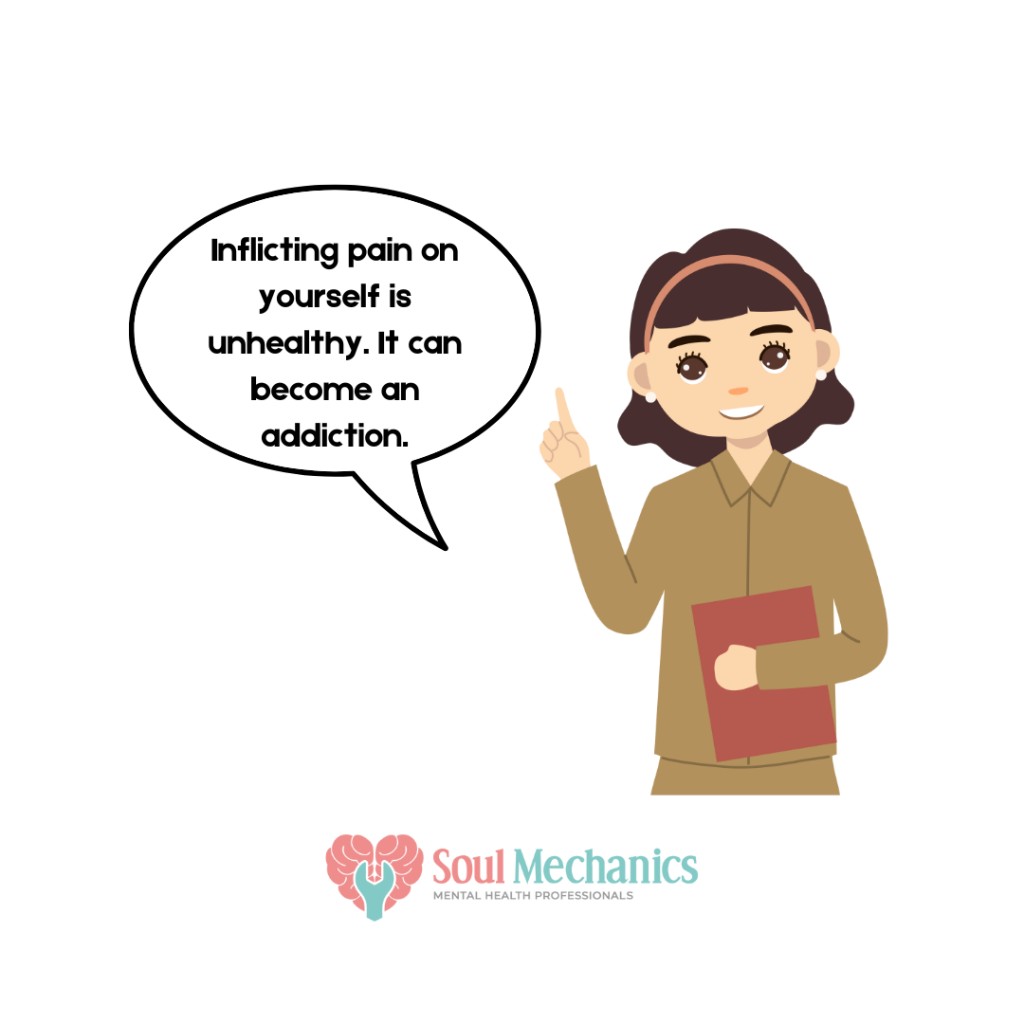
It’s essential to take note that self-harming is not a suicidal attempt, although the risk of accidental serious injury or suicidal thoughts can escalate over time. For those who self-harm, the act may feel like the only known or possible way to deal with their intense emotions. However, it’s a very unhealthy, dangerous and risky coping mechanism that can perpetuate a loop of shame, guilt, and further harm.
The Often Unacknowledged Forms of Self-Harm
While cutting is the more recognized form of self-harm, other harmful behaviours can often go unnoticed. These forms of self-harm can be just as damaging as the known ones and often harder to identify.
Not Eating or Food Restriction
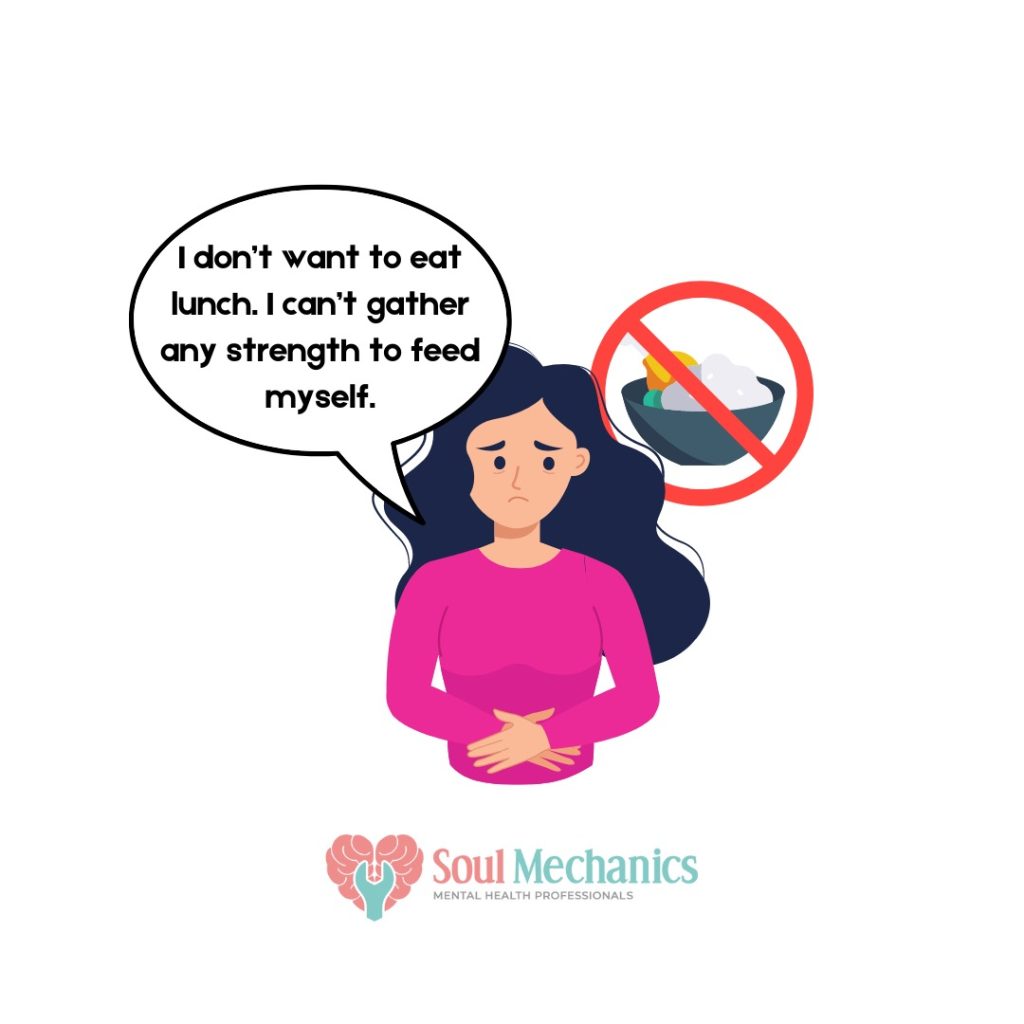
As seen in eating disorders like anorexia, food restriction can be a form of self-harming. The denial of nourishment is often rooted from deep emotional pain, the need to regain life control or due to self-loathing. Not eating is often used as a punishment or a means to suppress emotional distress, although it’s rarely addressed as self-harming in traditional terms.
Over-Exercising
Exercise is often viewed as a positive release channel for stress, but if it is taken to extremes, it can turn into a form of self-harm. Over-exercising is also used to push or punish the body to the extent of physical pain as an attempt to escape emotional pain.
Risky Behaviors
Engaging oneself in reckless or dangerous activities such as reckless driving, substance abuse, or engaging in unsafe sexual practices can also be a covert form of self-harming. These behaviours although may not involve direct physical injury are some of the harmful approaches to coping with internal emotional distress.
Emotional Self-Harm
Some also engage in emotional self-sabotage, whereby they frequently put themselves in situations that will emotionally hurt them. This involves toxic relationships or re-experiencing trauma. This form of harm, though it is not physical injury, is still destructive and keeps one in the loop of pain.
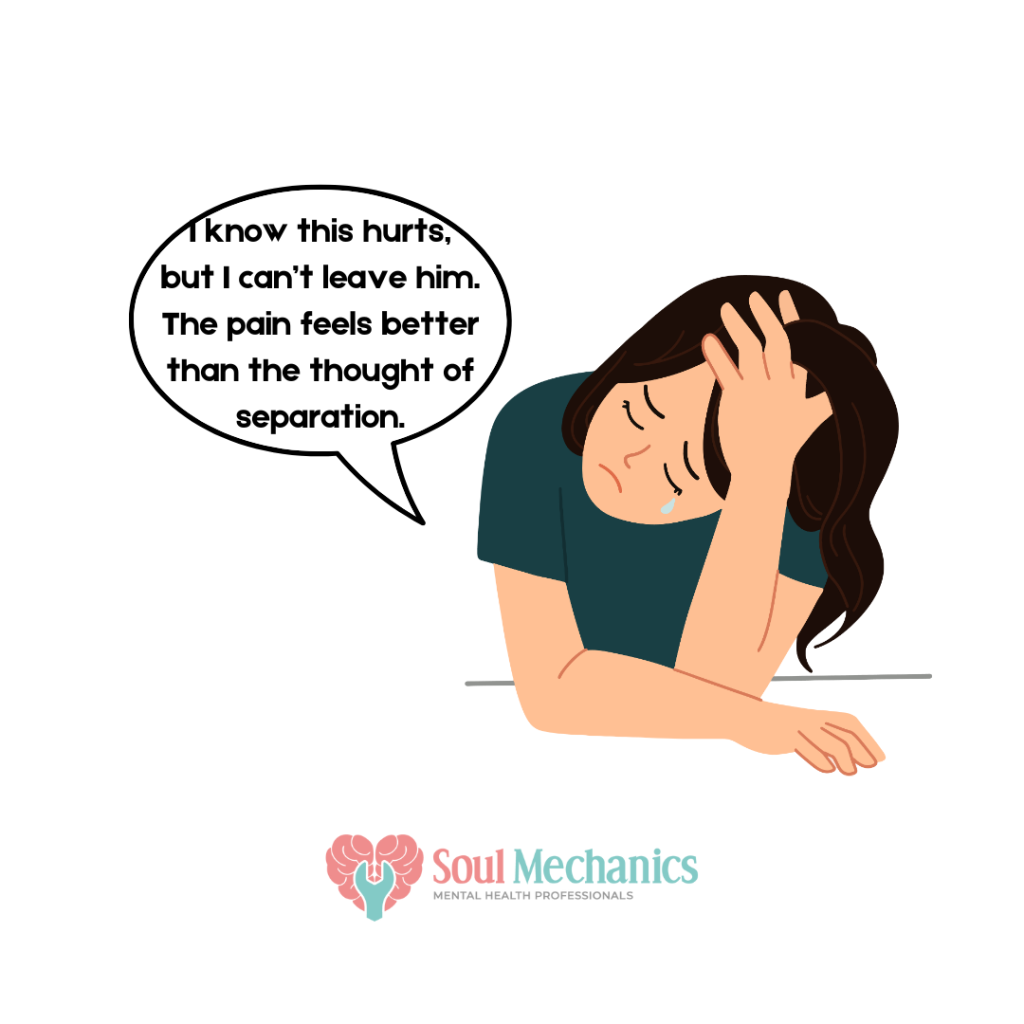
Recognizing these less obvious and addressed forms of self-harm is crucial as it allows for a deeper understanding of how unconsciously we tend to cope with emotional distress in unrecognized harmful ways. This recognition allows us to gradually break the unhealthy cycle of coping.
Reminder: If you or your loved ones are struggling with self-harming or mental health issues, please don't hesitate to reach out to us at Soul Mechanics KD or Soul Mechanics Ipoh. Remember, seeking help is not a sign of weakness but strength!
Why Do People Self-Harm?
People often harm themselves for various reasons, which is often a response to tough emotions or situations they’re experiencing. Below are some underlying factors:
Emotional Regulation
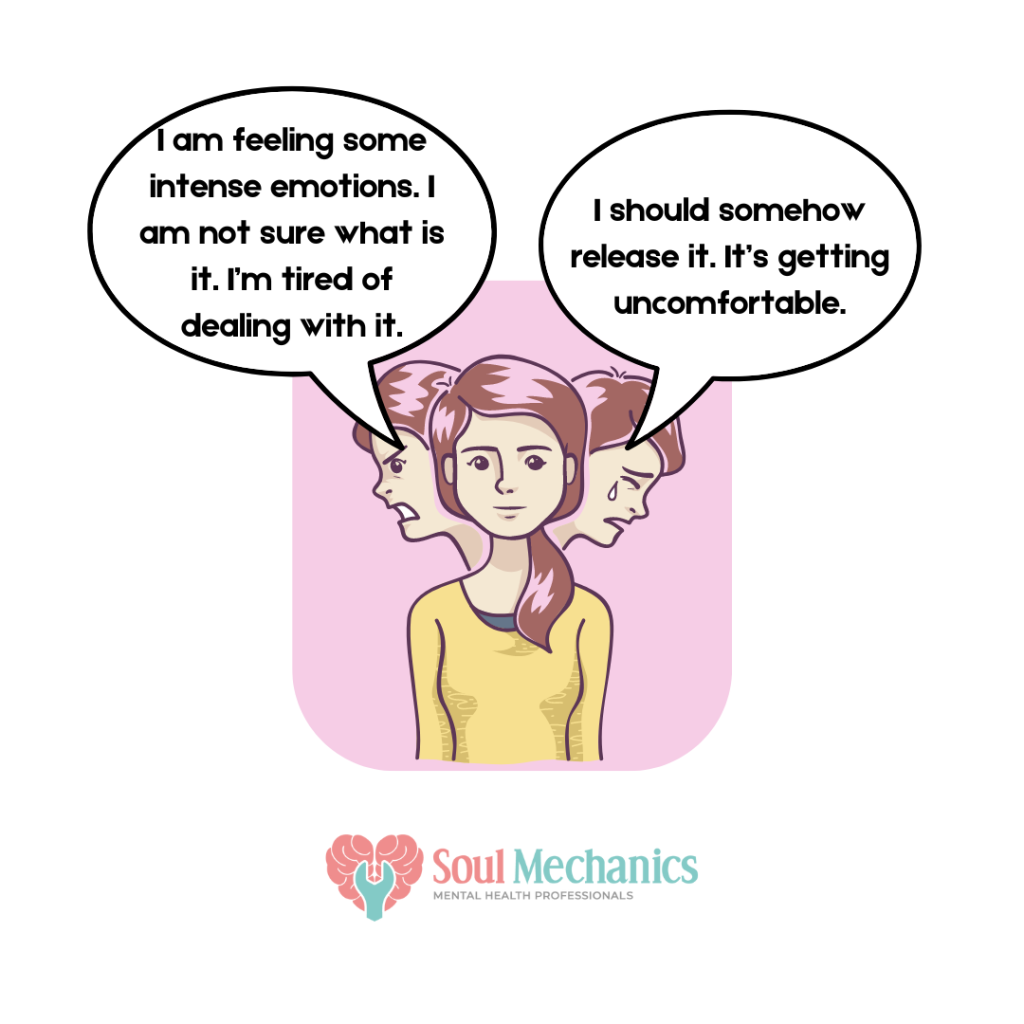
Sometimes we struggle to process our emotions like pain, anger, sadness or guilt and turn to self-harming as a way to release all those accumulated and suppressed emotions.
A Sense of Control
For some of us, life can be overwhelming and chaotic, whereby self-harm can feel like exerting control over our body when other aspects of our life seem to be uncontrollable or directionless.
Numbness or Dissociation
When we feel emotionally numb or disconnected from ourselves, self-harming can be a way to “feel something” at least through physical means and ground ourselves by releasing some pent-up emotions.
Punishment or Self-Criticism
When we are dealing with deep-rooted feelings of shame, guilt or self-loathing, it can make us turn to self-harm as a form of punishment or as a way to further reinforce negative beliefs about ourselves.
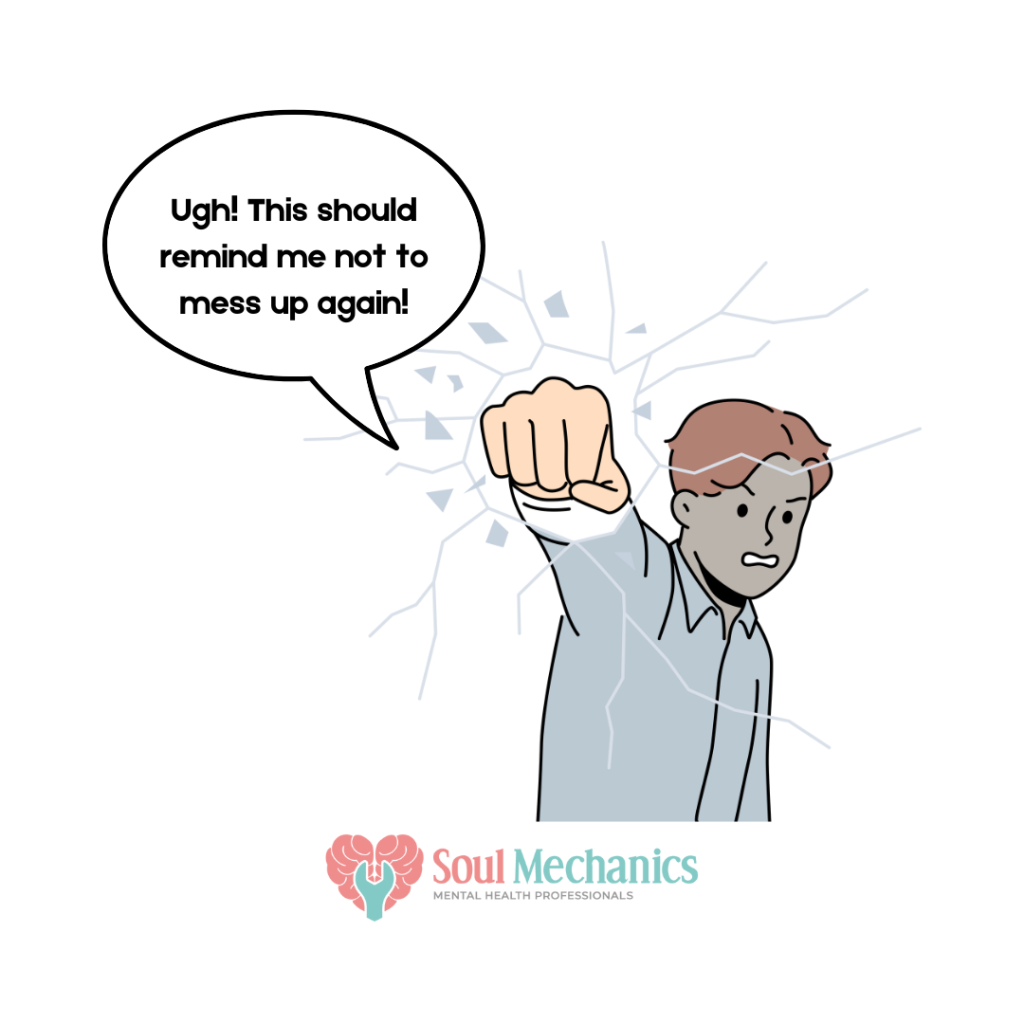
Communication
For some of us, self-harming can be a non-verbal means of expressing emotional pain to others, especially for those of us who struggle to articulate our feelings to others or even to ourselves.
Self-harming often provides one with temporary relief, but in reality, it actually further deepens your emotional wounds and reinforces your unhealthy patterns of behaviour.
The Cycle of Self-Harm
Self-harming often follows a repetitive loop that can be tough to break free from. This loop typically involves:
Emotional Trigger
When an emotionally distressing or overwhelming event happens, such as conflict, breakup, or a sudden surge in feelings of inadequacy, it often serves as a trigger.
Build-Up of Tension
Intense emotions like anxiety, anger or sadness will start to build up, leading you to feel a sense of internal pressure that can be unbearable.
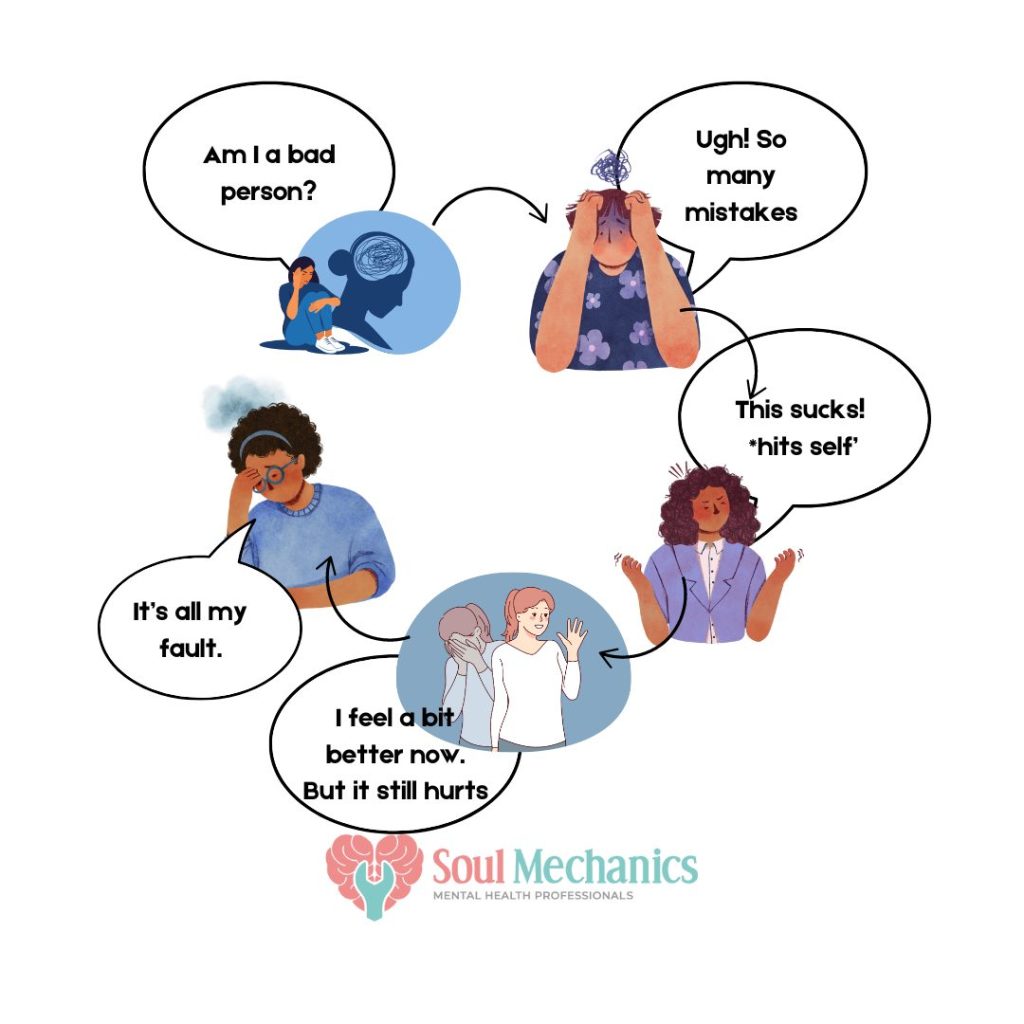
The Act of Self-Harm
Then one may engage in self-harm as it provides a temporary release of this emotional pressure. For a moment, it gives us a sense of relief and control.
Short-Term Relief
After self-harming, one may experience a short period of calmness as the physical pain distracts one from the internal emotional turmoil temporarily.
Shame & Guilt
As the relief sensation begins to fade, the feelings of guilt, shame or regret will start to take over, reinforcing negative self-perceptions which can further increase your emotional pain. This can lead back to experiencing the emotional trigger stage and restarting the loop again.
Breaking free from this loop can be tough, but it is definitely possible with the right support and healthier coping.
Managing Self-Harm Urges
If you or someone you know is struggling with self-harming patterns, managing these urges can be a silent battle. However, here are some strategies that can help one to decrease the intensity and frequency of self-harming behaviours:
Recognize Your Triggers
Identifying and understanding what triggers usually urge your self-harming behaviours is essential to manage it. These triggers can be emotional, which include feeling a sense of being overwhelmed, rejected or situational, like going through workplace or relationship conflicts. Keeping a journal to process and track when and why you feel the urge to harm yourself can help you address these patterns and gain deeper insights into yourself.
Create Self-Soothing Kit
You can create a self-soothing kit with items or activities that can provide you with comfort when self-harm urge arises. This includes sensory items like soft blankets, comforting scents, soothing playlists, bubbles, books and so on. This toolkit can significantly navigate you through the urge to harm yourself by giving you some comfort.
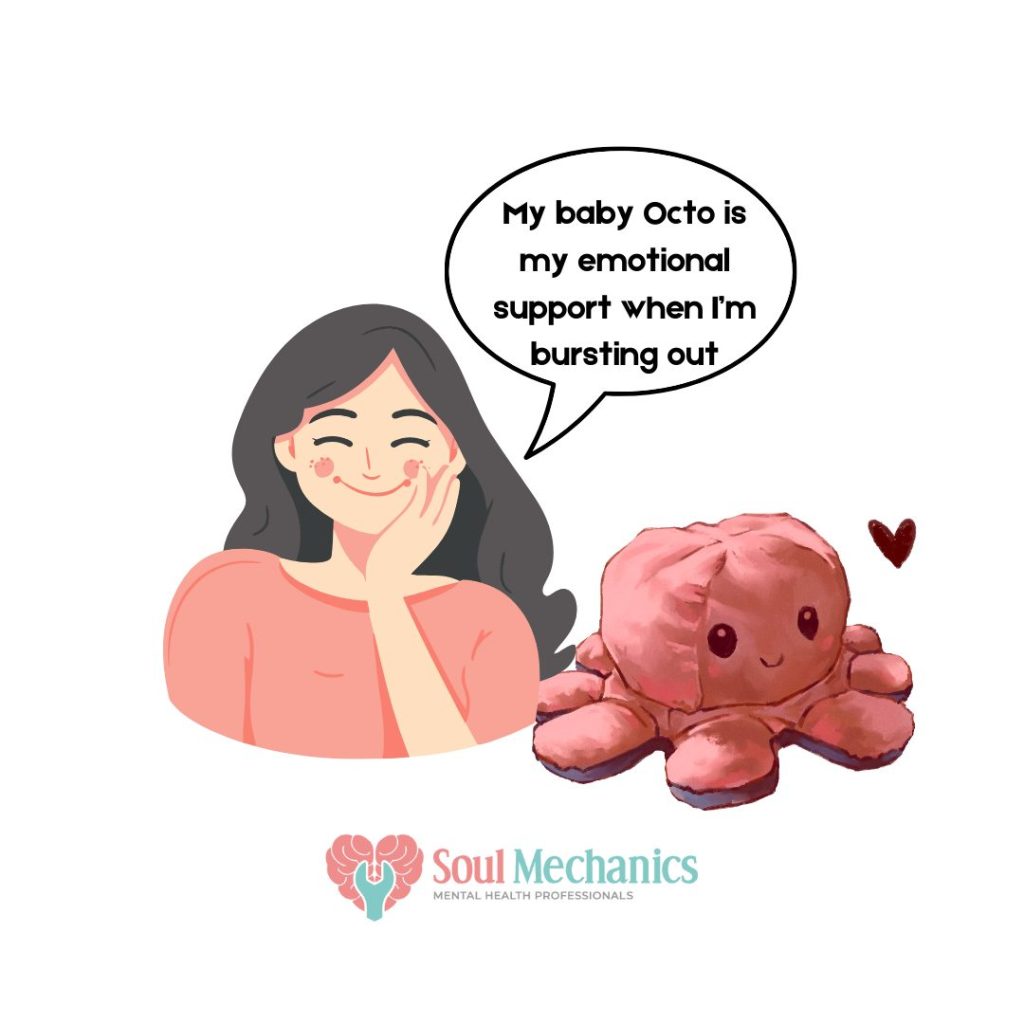
Develop Healthier Copings
Exploring alternatives to cope with your emotional pain is crucial to break your self-harming loop. Here are some of the strategies:
Physical Grounding Techniques: Holding ice cubes, squeezing a stress ball, or taking cold showers can help you ground your body without causing physical harm.
Creative Expression: Channeling intense emotions into creative outlets like writing, painting, drawing, or music can provide a non-destructive approach to processing your emotions.
Physical Activity: Exercising can also be an effective channel to release your pent-up emotions and tension. This includes yoga, jogging, or dancing, which help you manage your emotions healthily.
Delay the Urge
When the urge to harm yourself arises, try to delay the act by 10 to 15 minutes at least. During this moment, try engaging yourself in different activities like walking, calling a trusted loved one, gaming or practising deep breathing. Often, the intensity of the urge will reduce over time, which allows you to prevent yourself from self-harming.
Seek Professional Assistance
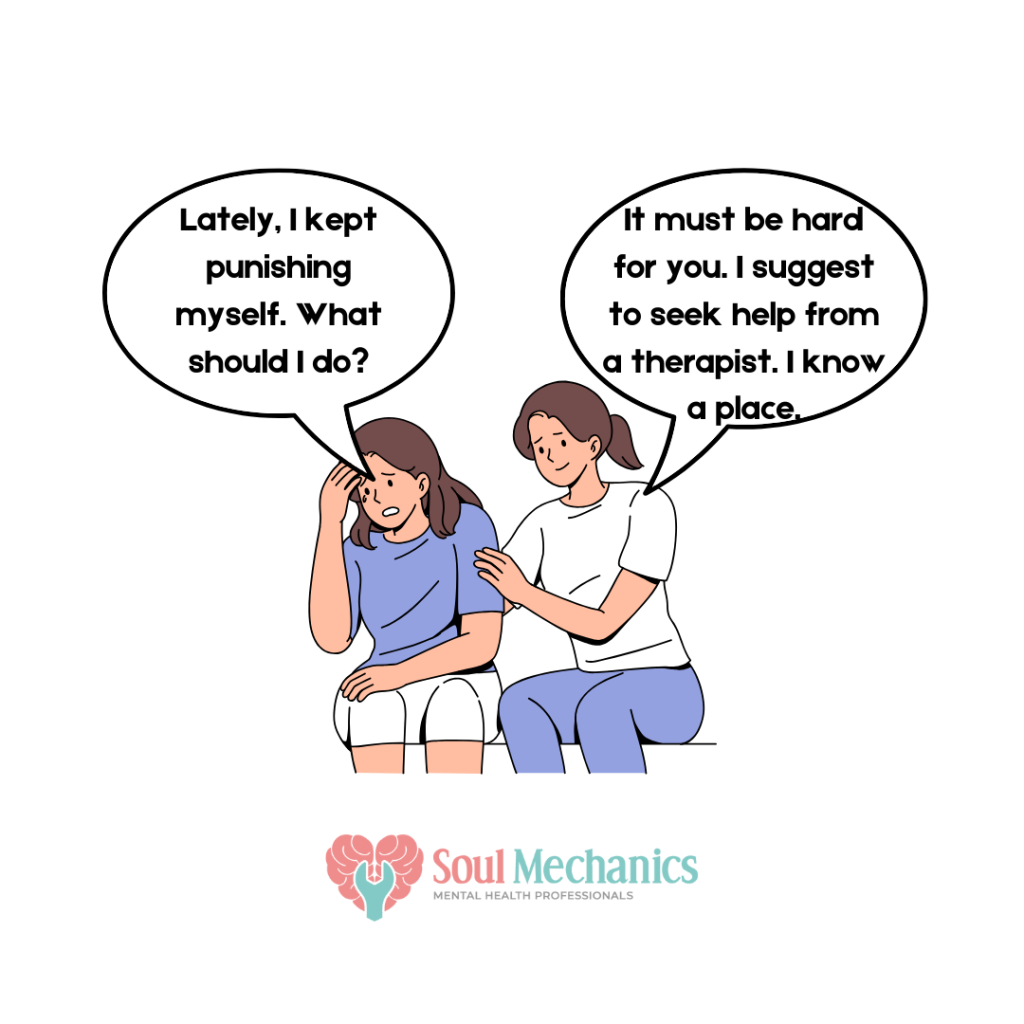
Although self-management strategies are effective, seeking a professional mental health therapist's assistance is crucial for long-term healing. A trained therapist can help you explore and uncover the underlying emotions or pains contributing to these self-harming patterns and navigate you to build personalized healthier coping.
Conclusion
In short, self-harming is a deep and tough behavioural pattern that often serves as a coping mechanism for many for the deeper emotional pain that they try to suppress or run away from. Although this loop seems to be tough to break free from, there are other healthier approaches to manage the urges and move towards healing. Seeking professional assistance is strongly suggested to recognize and understand the triggers and learn to break free from this strongly gripping pattern; fostering a more empowered and fulfilling journey ahead.
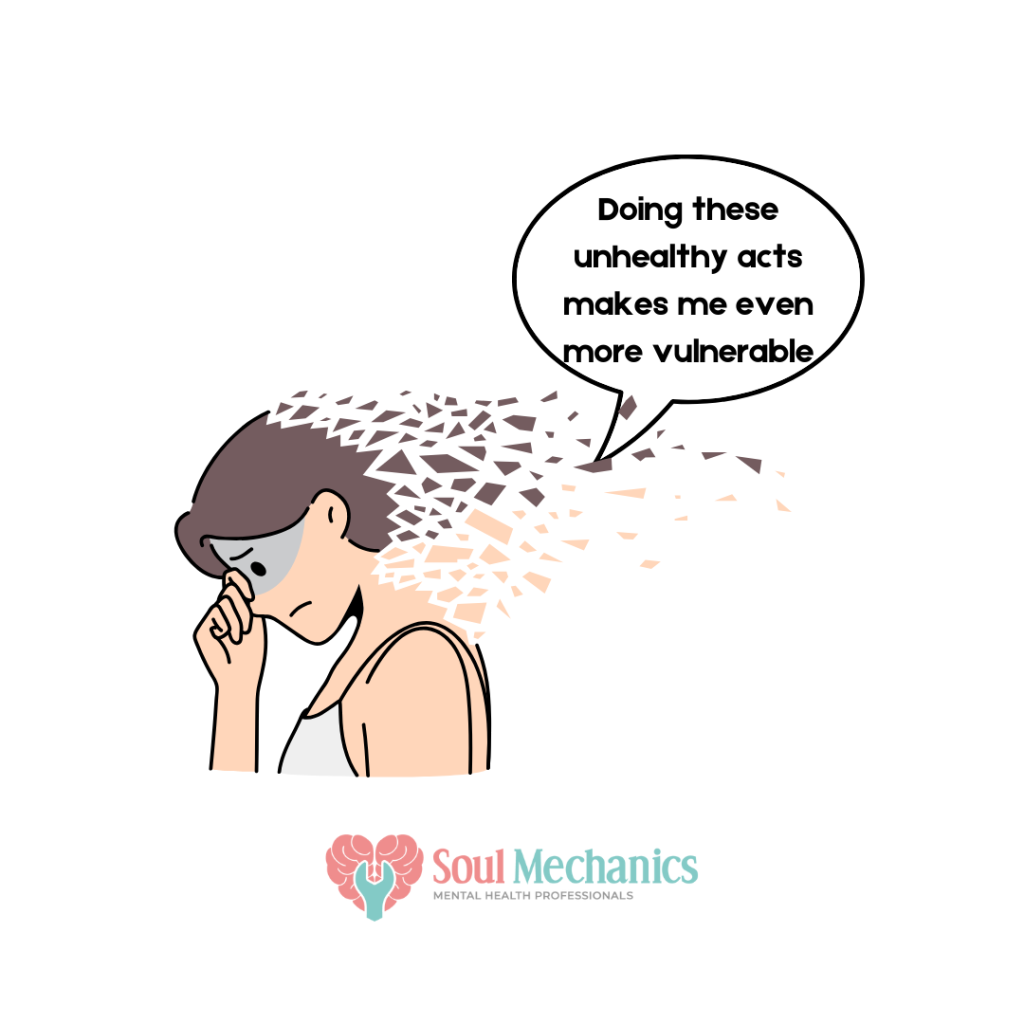
If you’re looking for a therapist in Kota Damansara or Ipoh area, you can click here for more information.
If you enjoyed reading this, why not broaden the horizon of knowledge by learning about "Learning to Trust Yourself After Trauma"? You can read the blog here.
For more content related to mental health do follow us on our official Instagram.


